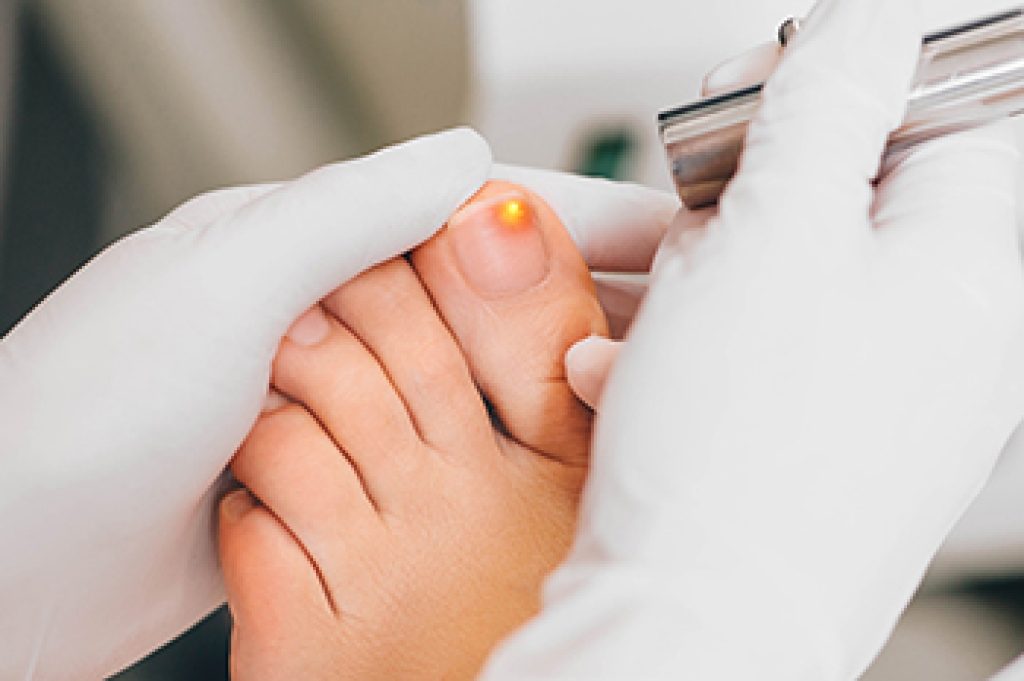 Laser treatment is a non-invasive procedure that can be used to target and eliminate toenail fungus. It is a promising alternative to traditional medications or topical treatments. During this procedure, a podiatrist uses a specialized laser to pass light through the toenail without damaging the nail or surrounding skin. The laser specifically targets the fungus, heating and killing the fungal cells to stop them from growing further. Patients can expect the session to last about 30 minutes to an hour, depending on the severity of the infection and the number of toes affected. Most report feeling a warming sensation or slight discomfort during the treatment, but it's generally well-tolerated and doesn't require anesthesia. One of the key benefits of laser therapy is that it has minimal risks of side effects. While some individuals may see improvement after a single session, others might need multiple treatments to get rid of the fungus. Recovery time is minimal, though it may take several months for the nail to grow back out and reveal the full results of the treatment. If you have toenail fungus, it is suggested that you make an appointment with your podiatrist who can determine if laser treatment is appropriate for you.
Laser treatment is a non-invasive procedure that can be used to target and eliminate toenail fungus. It is a promising alternative to traditional medications or topical treatments. During this procedure, a podiatrist uses a specialized laser to pass light through the toenail without damaging the nail or surrounding skin. The laser specifically targets the fungus, heating and killing the fungal cells to stop them from growing further. Patients can expect the session to last about 30 minutes to an hour, depending on the severity of the infection and the number of toes affected. Most report feeling a warming sensation or slight discomfort during the treatment, but it's generally well-tolerated and doesn't require anesthesia. One of the key benefits of laser therapy is that it has minimal risks of side effects. While some individuals may see improvement after a single session, others might need multiple treatments to get rid of the fungus. Recovery time is minimal, though it may take several months for the nail to grow back out and reveal the full results of the treatment. If you have toenail fungus, it is suggested that you make an appointment with your podiatrist who can determine if laser treatment is appropriate for you.
Laser treatment can be an effective way to get rid of toenail fungus. If you have any questions about laser treatment, consult with Shalonda Davidson, DPM from Instride Carolina Foot Care. Our doctor will assess your condition and provide you with quality treatment for fungal nails.
What Are Toenail Fungal Infections?
Onychomycosis, or fungal infection of the nail, is a relatively common and non-serious condition. Around 10 percent of U.S. citizens are afflicted with fungal nails. Common forms of fungus that infect the nail include dermatophytes, yeasts, and molds.
Symptoms of Toenail Fungal Infections Include:
- Nail thickening
- Brittleness of the nail
- Discoloration of the nail
Diagnosis for Fungal Nails
Fungal infections are diagnosed by fungal culture and microscopy. This will rule out any other conditions such as nail trauma, psoriasis, lichen planus, and onychogryphosis.
What Is Laser Treatment?
Laser treatment is a non-invasive, safe, quick, and painless procedure that uses the heat from a laser to kill fungus in the nail. Each infected nail is targeted with a laser for several minutes. The treatment is usually utilized several different times over a select period. During this time, a podiatrist will keep an eye on the infection.
If you have any questions, please feel free to contact our office located in Statesville, NC . We offer the newest diagnostic and treatment technologies for all your foot care needs.

